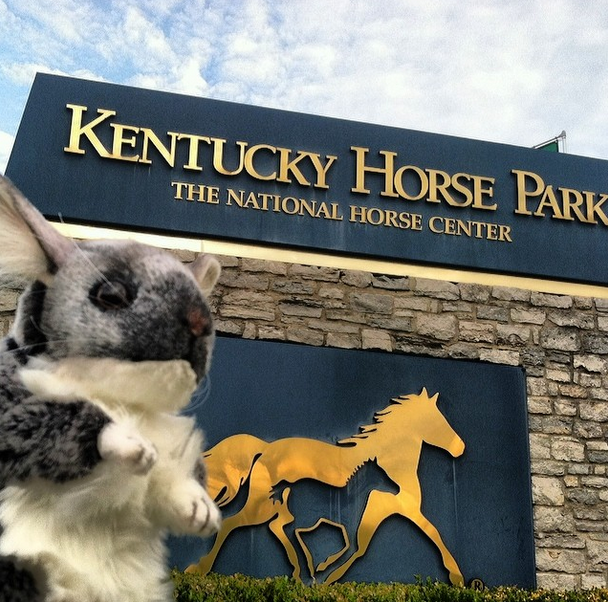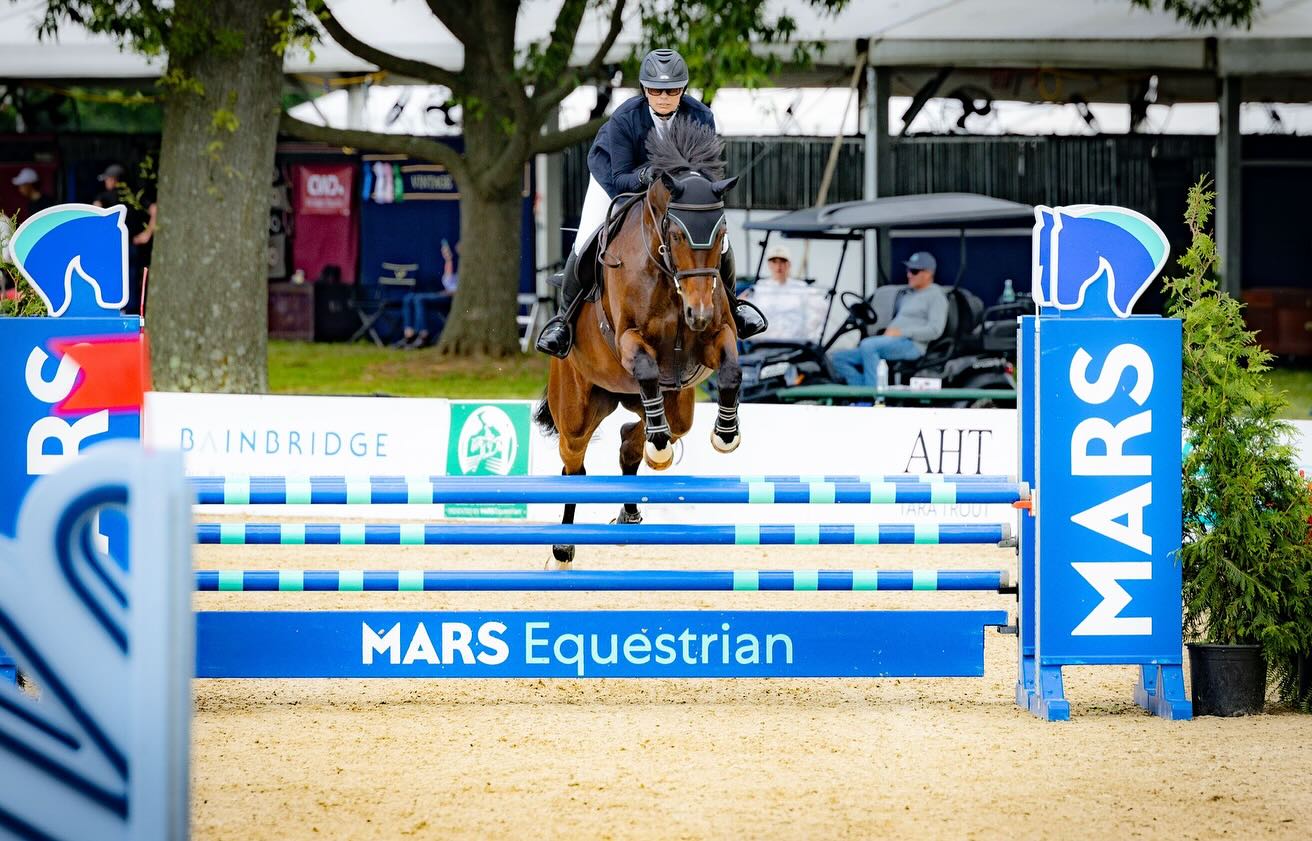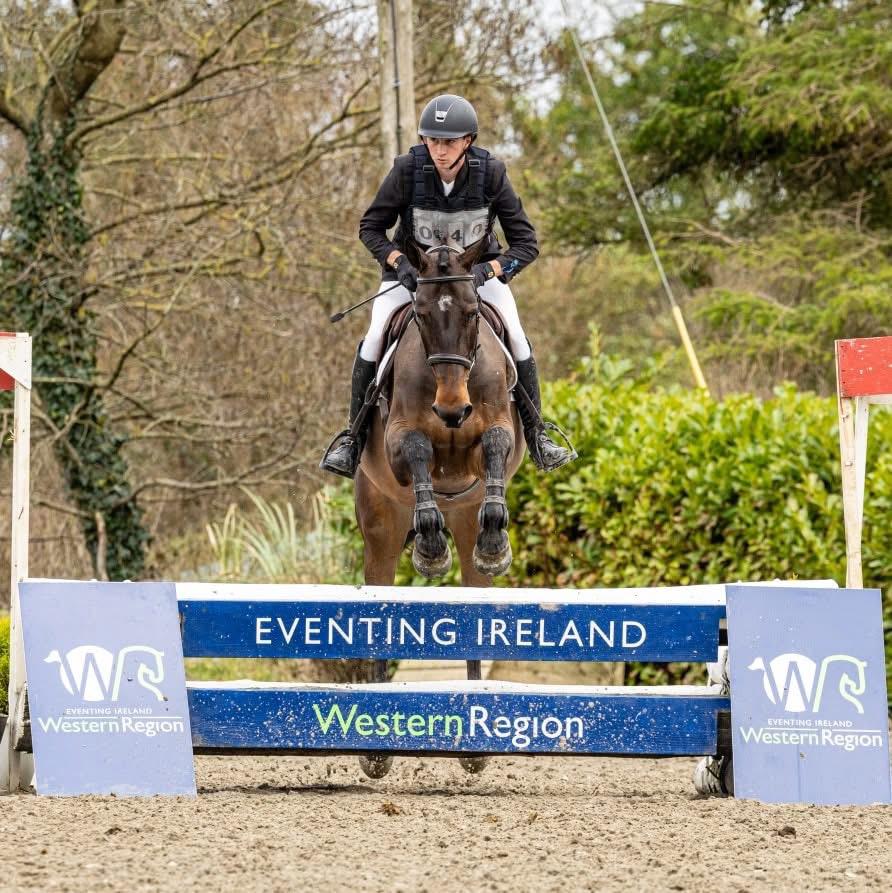Welcome to The Debrief, where we’ll recap the experience of a rider or equestrian following a big result or otherwise memorable competition or achievement. Click here to read more editions of The Debrief. This week, we’re catching up with farrier Steve Teichman, who has traveled the world for his craft and won the 2023 Wofford Cup at the USEA Annual Meeting & Convention for his service to the sport.
Named after beloved horseman Jimmy Wofford, the Wofford Cup has been awarded to a wide variety of horsemen and women, from course designers to riders to judges and everyone in between. But for the first time since its inception in 1977, the Cup has been awarded to a farrier– someone who works outside the limelight, but who is inarguably crucial to our horse’s welfare.
According to the USEA, “When selecting the Wofford Cup recipient, the selectors identify those who have given so much to the sport that they rise to the very top. They dedicate their life to the betterment of eventing. The 2023 recipient was not only someone who fit that description, but defines that description.”
Meet Steve Teichman. An artist and farrier, Steve is well-known for a prestigious career shoeing event horses. He’s worked at five Olympic events, as well as several Pan-American Games and World Equestrian Games. Now retired, he spoke to me from his home base of Maine about everything from long format eventing to why he’s thrilled to have more female farriers in the industry to why he thinks shoeing a horse before two years old should be illegal.
How did you get started with horses? How did you start shoeing horses?
I grew up in a big family in Chester County and I was one of nine brothers and sisters. It’s a funny story because when I grew up I always wanted to be an artist. And my father was not going to have any of that. He knew I had a creative side, so he goes ‘I know this guy who shoes horses. Why don’t you go spend the summer with him?’ I was 13 at the time, and that was the kiss of death because I immediately fell in love with it. It satisfied my creative side and I got to work with animals. But the deal was I still had to go to college and graduate school and do all of that. So that launched me into shoeing horses in 1973. Then I did some graduate work at the University of Pennsylvania. I worked in their large animal hospital at New Bolton center. And then I just launched my private practice. I was probably the first farrier to have a large multi-man practice in Chester County. We had eight trucks on the road there for a while because Chester County was just packed with horses.
What’s your shoeing philosophy in one sentence?
Keep it simple and lose the hoof knife.
I traveled all over the world. I can’t tell you how many countries I’ve been in. And if I lost my hoof knife, that would be fine. And believe me stuff got lost. We sent equipment over to Australia because I was there for almost four months. We lost all my equipment for a long time. But if there’s one thing you’d lose all the time, it’s your hoof knife. They fall out of your aprons or out of trucks or out of boxes and it’s not really a bad thing. You do not need a hoof knife to shoe an event horse at all, almost ever. It will be the one tool that will get you in trouble.

By Steve Teichman
Do you think there’s overlap between art and shoeing horses? Is shoeing horses more of an art or a science?
I think I was fortunate enough to grow up in an era where horseshoeing was a combination of art and science. Because we were early on in the science. And back then you had to have good metalworking skills. It’s changed a lot since then. There’s some crazy good products out there. We’ve come a long way. Personally it satisfied my artistic side, I love to bash metal around and solve problems and it worked out to be a good combination for shoeing horses.
And then in terms of the science side of things, I’m 65 now, but I got my master’s in equine locomotion research when I was 60. Ever so slowly, we’re starting to look for the science in hoof care. So the Royal Veterinary College in England under the guidance of Renata Weller, an amazing veterinarian, decided that veterinarians were the wrong people to be researching hoof care. So she created a program that took about 12 Guys from the United States and she said ‘we’re going to teach you all to be scientists even though you’re not, and you’re gonna write papers and publish papers.’ It was a great program.
Talk me through the moment you found out you received the Wofford Cup. What was that like?
Jim [Wolf] called me, and we only talk every few years or so, so we spent a couple hours actually catching up with each other and he goes ‘oh, I almost forgot to tell you why I’m calling you.’ He said ‘you’re the recipient of the Wofford cup.’
Jimmy [Wofford] was a huge part of our coaching program, either directly or indirectly. But he was, you know, he was also not to say that sounding stupid he was also like, just like a regular guy’s guy. What I liked about him most as he was not necessarily a horse person all the time. You know, you could. We had some great times. Some of the best times I remember was us going fishing when we were at Fox Hall before the 2000 Olympics. Jimmy was always hunting. He had his dogs. He had fishing. I liked that he was very diverse. He’s just a regular kind of person. When I wound up with cancer, and he was in the throes of struggling with his, he would call me from time to time to see how things were going. Just a kind person.
You penned a really nice sentiment for the USEA banquet about finding your community and being a ‘somebody vs a nobody.’ I loved the sentence, “life works best somewhere in between.” Can you talk a little bit more about that?
In the horse industry, you feel a lot of pressure to be somebody who goes someplace. Sometimes it’s just too much, especially in the sport of eventing because it’s so hard on the horses and the riders.One of my reflections was that you can feel like you’re the guy, you know? You’re going to the Olympics to deal with so-and-so’s horses. But then the next minute, you’re at a dinner with Olympic athletes from all around the world and you feel like you’re nobody. Your ego’s all puffed up one instant and then in another, you realize, holy crap, you’re really nobody, you’re a fly on the wall. They don’t even know you’re alive. Because you’ve been thrown into the completely other end of the spectrum.
That was one of those life experiences that I learned a lot from. I wouldn’t have experienced it if I hadn’t been at the top of a hotel somewhere in Hong Kong, where I felt those feelings.

Steve Teichman, Dr. Catherine Kohn, and Dr. Brendan Furlong. Photo courtesy of Steve Teichman
You’ve been to five Olympic Games. Which one was your favorite?
I would say that my most favorite was Australia. Partly because I still love the long format. But also because we were in Australia for a long time. I was there from August through October. We lived in a community on Kerry Packer’s huge farm in Australia, about five hours north of Sydney. It was a big undertaking and it required everybody to participate. You weren’t just a farrier. I would drive a van or would help if somebody got a flat tire. You would cool off horses. It didn’t matter if you were a veterinarian or if you were a horse shoer, everybody helped out. It was really good bonding and good teamwork.
It was well organized. They had great support from veterinary facilities, farrier facilities, from everybody that had come to Australia. Kerry Packer took great care of us, from housing, to dinners to trips, and it was the most crazy experience. This guy was one of the wealthiest men in the world. He had Arnold Palmer building him golf courses on his property. We had a racetrack so we could go race cars. I mean serious Formula One race cars. You could go sporting clay shooting. You could go hunting. We went fishing, fly fishing. I mean the place had ruby mines on it. It was just an unbelievable experience.
He had 30,000 acres of property, he had polo ponies and he quarantined a huge chunk of his property off and it’s where we all came and stayed and he took care of all our meals. They have restaurants. It was just an amazing farm in the middle of nowhere. I mean, his driveway was an hour long.
You’d be at a polo match and one of the girls might think a horse was colicking and the next thing you know there’s a helicopter landing in the middle of the polo field. Two veterinarians hop in the helicopter and off they go back to the farm in two seconds, instead of an hour-and-a-half drive through the Outback.
And like I said, I really enjoyed the long format. I think it gave everybody good guideposts for training and getting their horses fit. But you know, that was a long time ago and we’ve all adapted and life is different. I might sound like an old timer here, but it was a good way to get to your event and know you were well prepared. I think we sort of lost our guiding lighthouse for a little bit after we lost the long format.
The Wofford Cup is all about bettering the sport of eventing. What are some things you would like to see changed to better the sport? Would you want to go back to the long format?
No, I don’t necessarily think that we should go back to the long format. I guess that’s just the nostalgic side of me. But, I like the fact that we’re always moving towards safer sport, safer fences.
When it comes to shoeing, Cesar, Washington, and your farrier all shoe horses the same type of way. How we shoe horses hasn’t changed a hell of a lot in a couple hundred years. We’re only just getting that through our heads and applying technology. So, it’s on a curve that’s going the right direction. I’m going to a Farrier Conference in January, mainly because it keeps me in touch, and it’s really good to see the new products, the 3D printed pads and better quality shoes.
There’s been a huge shift in the industry. Last year, I got an award there for their Farrier Hall of Fame. Last time I was there, the audience was all men. This time, it was probably 50 percent– if not more– women. And I love it. It’s one of the things that is helping this industry.
This dawned on me one day because I used to have this young girl that worked for me. We were finishing up a barn of show horses and we had just left. You had to schlep your tools from the barn a ways to your truck and we had just started the walk when she goes, ‘Oh I forgot.’ I’m like, ‘what did you forget?’ And she goes, ‘I have to fly spray these horses before we go.’ She ran back into the barn, fly sprays the horses and came back out, still schlepping her tools. And it dawned on me that these girls really care. They don’t give a hoot about bashing steel around, but they care very much for the horses.
It made me realize, oh, this is the part that I’ve been missing. I’ve been just so focused on just one thing and it really made me shift my focus more to caring about the entire animal. I think I’ve always done a good job, but that’s a different element to it. In the last five years of my life, every apprentice I’ve had has been a girl.

Steve hard at work. Photo taken by Patty O’Brien, courtesy of Steve Teichman
We’ve been seeing more and more horses go to the Olympics barefoot, like the Swedish show jumping team. Do you think we’ll see that trend move over into event horses?
I want to say shoes are pretty much essential for event horses. So, I was at a high performance meeting on the west coast organized by Dr. Mark Ravenel, (who was one of our team vets in Normandy). One of his key speakers was Dr. Lars Roepstorff, one of the leaders in studying equine locomotion. He started doing all of this video analysis on shod and unshod horses in Europe and that is essentially how the barefoot trends started.
But, I don’t think you’re gonna see barefoot in eventing much above your lower levels. A lot of the reasons are simple– if you’re gonna go from Virginia to a place like Southern California, your horse’s feet just aren’t gonna adapt enough to do it. It’s that simple.
If I had anything to say about horses in general, it would be that it should be illegal to put shoes on any horse till about two years of age at least. They should not be allowed before then unless a veterinarian requires it. It’s one of the simplest and best things we could do for animal welfare. Remember, the hoof capsule does not reach its full shape until about five years of age.
What’s one thing every horse owner could be doing to improve the quality of their horse’s feet?
The older horsemen used to take their shoes off in the fall. Nobody does that anymore. Our Florida circuits I think are not productive. I get it. I get why we all go to Aiken and why we go to Ocala. But we’re not doing these horses any favors at all. In the early 2000s, after Fair Hill was finished, every horse used to get their shoes off. Then if they showed up in Florida, I didn’t put shoes on them until February and they were better for it.
Get balanced films twice a year of your horses’ feet while the farrier is there. Do it in January and do it in August. In January, their feet are usually in their best shape. But in August, the capsule is starting to distort. You’re losing heel and the toes are getting along.
For example, we would do barns like Boyd’s, he would always have a vet meet us and we would pop the shoes off, get the X rays. I can look at the hoof right there and I can say, ‘oh, let’s try trimming the foot like this.’ Then shoot another lateral and see if I actually made all the adjustments.
What would you say has been most crucial to the success of your career?
I think I’m just pretty creative. If there’s a simple thing that’s helped me it’s thinking outside the box. When I got sort of thrown into working for the Olympic teams, I was very much of the mindset that if you had this problem, you put on this type of shoe. But then I realized when we’d be traveling, you didn’t have all the bells and whistles and fancy trucks. Sometimes you’re working out of a drywall bucket, and you had to become really resourceful and figure out ways to make these horses comfortable. And that forced me to realize that the foot didn’t actually work the way we were taught.

Created by Steve Teichman
If you could talk to your younger self, what advice would you give him?
If I were talking to my younger self, I would say listen and be a little more open-minded. Be a little more flexible and pay attention to the horses a little more. We used to never take the time to watch the horses go. This is probably one of the single biggest mistakes farriers make. You’re busy, you’ve got to pay bills, and you’ve got 10 horses to shoe. You have to watch every horse walk and trot before you shoe them and after you shoe them if you don’t, you’re screwed. If your farrier doesn’t watch your horse go, he’s missing it.
There are few farriers out there who have invested more in the welfare of our top event horses. Congratulations to Steve on a well-deserved achievement.
Go eventing.












































































